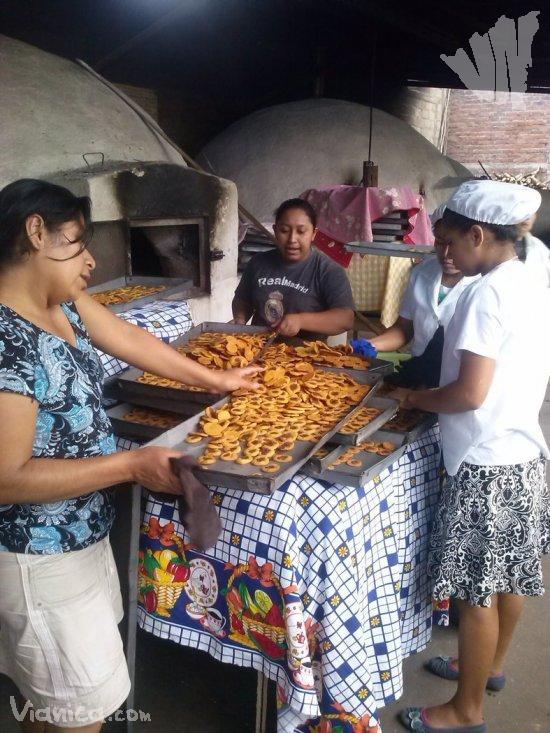History of Somoto rosquillas
Love for rosquillas
How Somoto rosquillas were born
By Roger Solorzano Gaitan
A union between two nationalities, two different customs and the desire of making a new life at any cost, it’s what is hidden behind each gram of corn; the tail of the traditional and prized rosquillas from Somoto.
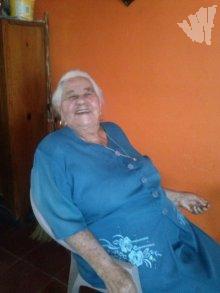
Before World World II, Vilchez was in Tegucigalpa, Honduras far from his native land Somoto, in search of a different life. Then, he met Maria Luisa: young, white, petite in stature, who also apparently felt a strong attraction to him. They moved plans, to land in Nicaragua, against all odds, everything and everyone.
The parents of the girl would never support the relationship with the Nicaraguan boy and his parents would never support such a sudden return. "I was stolen" confessed Maria Luisa, who does not hide behind her smirk that she was actually in fact stolen (taked without parents permission] but what's more gladly at that youthful adventure. They came together; walked past the border hiding their sinful love.
The two wandering love birds walked for eight days, nearly 200 Km, by the time Pan-American Highway was a dream and the connection between neighboring nations was through roads formed by macadam hard stones. They crossed the border line quietly and finally reached their destiny. The "missing" young lady from Tegucigalpa arrived in Somoto with her beloved and found refuge in the Vilchez Ramirez family with no other purpose aside from starting a new family; as a result an offspring of nine was born.
They tied the knot, lived in the family home and after a few years of learning the motherly and home craft, she picked up the first steps in the art of making "rosquillas" (miniature corn donuts) from her aunt Adilia Ramirez and her sisters-in-law, as they baked for family feasting or as gifts for their friends without any business perspective in mind. For Maria Luisa it was a form of entertainment. Making rosquillas in Somoto was like tea in England a centuries-old practice that distinguished the somoteña woman.
The first comercial rosquillas
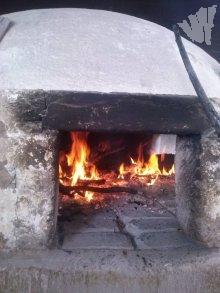
Maria Luisa initiated with the first steps, always using domed wood stoves but at the same time figuring out a way to avoid that intense heat would cause a mild consistency and little durability.
Tweaking the details on drying the corn, in the heat of the based coal oven, exposing the mass inside the chamber for ten or fifteen minutes at temperature of 400 degrees Celsius, it was then possible to make an important difference between Somoto rosquilla and other products from Jinotega, El Viejo, Rivas or elsewhere, that likewise are called rosquillas but they taste and appreciate differently.
Another major change in recent years was the installation of fiberglass between two layers of oven brick which allows saving fifty percent of firewood and moreover reduces deterioration of the northern forests. It has been verified that 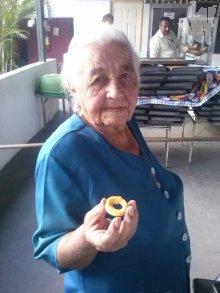
The demand on that simple circular shape and whitish corn snack called rosquilla grew. Also increased the demand for "hojaldras" (rough puff pastry) a slim and tiny toasted tortilla adorned with a small portion of sweet brown sugar which some call "viejitas" that translates into “old lady”. In third order they were empanadas and other similar snacks.
Maria Luisa recalls working initially with ten pounds of corn per day but then she challenged herself to grow. Ten years ago, half a century from the initial business, they managed to move a quintal and a half of corn to take thirty thousand daily rosquilla. But fame has transcended so, that now they work three daily quintals of maize to take sixty thousand pieces per day to an impressive growth of 3000% over the first operations, where the product was sold house by house in the small streets of the remote city.
Family tradition and national pride
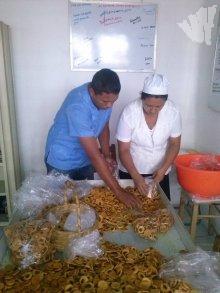
The success headed many of their descendants to turn their eyes and their lives to making rosquilla. Olga Vilchez, the eldest daughter of this family, is heads down in the process, evidencing that there will be Vilchez rosquilla for a while.
At all times Olga recognizes that the entrepreneur was his mother who now oversees the processes from far, every day in a room, where she suddenly enters to check that everything is going just right. Another two children of the family Nolasco Vilchez engaged in this factory and one opened his own "rosquillero" business, the Tinoco Vilchez Factory, who is also called rosquilla Vilchez.
But the long-term guarantee is manifested by the presence of Julius Caesar, grandson of Doña Maria, who along his wife Mayling pack and sale rosquilla in the factory, with zeal owner but with a work attitude of giving maximum performance. This is the third generation.
High quality business
After the drive of the first entrepreneurship, Somoto quite being a remote town to become a leading destination in the country, not only for the Canyon in the Namamcambre area but for its tasty rosquilla. The thirty-seven rosquilla initiatives move more than two hundred million annual rosquilla.
Success is indisputable. It is common to hear in the factory during short times the expression: "Donuts are sold out, expect next batch in about fifteen minutes". Then, while production is shipped, a new process sets off as the wood burns and it is left on the grill so a new batch goes into the oven for ten minutes.
Much of the rosquilla production goes abroad; especially to nostalgic US markets, Costa Rica and Spain, where the Nicaraguan community overseas appreciates the grace of a mixed bag (rosquilla and hojaldras).
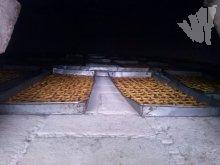
At the international airport rosquillas are always for sale and you can find them in major handicraft centers of Managua, Masaya and Leon as well as in most intercity bus stations where it is common to hear the herald of street vendors offering as Somotoñas any kind of similar rosquilla benefiting from the quality prestige these snacks have won; born out of one beautiful love story.
---------------------------------
Author and Sources
The theme "History of Somoto rosquillas" was developed for ViaNica.com by Nicaraguan journalist Roger Solorzano Gaitan (co-funder of this website) in November 2014. Translation from Spanish to English by Vanessa Aragon.
The sources of information were face-to face interviews with the people quoted and mentioned in this document.
